Mt. Kilimanjaro
As the highest mountain in Africa, with its summit being approximately 16,100 feet from its base and 19,341 feet above sea level, it is no wonder why bucket lists of avid climbers and hikers worldwide feature Mt. Kilimanjaro in Tanzania. The mountain features three volcanic cones, Kibo (the highest), Mawenzi, and Shira (the lowest). Mawenzi and Shira are extinct and Kibo is dormant, though it is possible it could erupt again in the future. While the most recent volcanic activity took place about 200 years ago, the last eruption took place about 360,000 years ago.
Kilimanjaro can be hiked all year round, however, we feel it is best to climb when there is a lower possibility of precipitation. The dry seasons are from the beginning of December through the beginning of March and from late June through the end of October. These are considered to be the best times to climb in terms of weather. Please note that large animals are rarely seen and are more frequent in the forests and lower parts of the mountain. Though there are six main trekking paths used to climb Mt. Kilimanjaro, we feel the nine-day/eight-night Machame Route to be the best option.
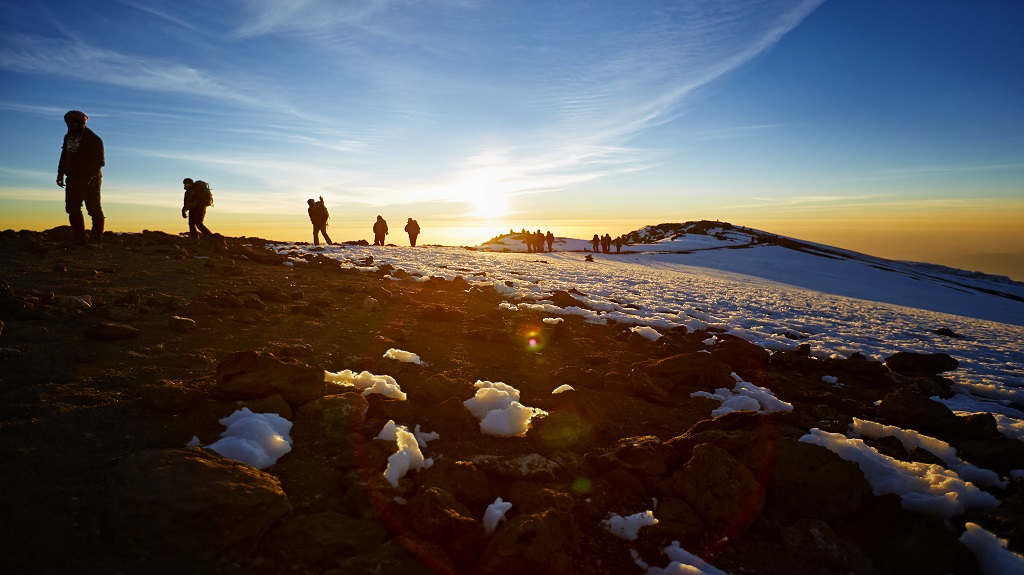
Machame Route
The nine-day/eight-night Machame Route is Kilimanjaro’s most popular trail, with 45% of climbers opting to use this route, and arguably boasts the most beautiful and varied scenery of any of the routes taken up the mountain. Machame leads its hikers through some of Kilimanjaro’s most impressive features, including the Cloud Forest on the southern slopes and the dusty Shira Plateau. However, Machame is also considered one of the hardest trails to tackle but has a higher success rate than Marangu as its topography allows hikers to climb high and sleep low, meaning better acclimatization. The route is generally recommended to more adventurous climbers with some experience of hiking. Though the climb is not technically as challenging as climbing the Himalayas or Andes, the high elevation, low temperature, and occasional high winds can make Kilamanjaro a difficult trek and even experienced and physically fit trekkers may suffer some degree of altitude sickness.
VIP Trekking Inclusions & Amenities:
- Large tent with raised beds, large mess tent with backed-chairs, portable private toilets, three-inch foam mattresses, and pillows
- All food on the mountain with services of dedicated cook (plus fresh-pressed coffee!)
- Filtered water while on the mountain
- All safety equipment (including portable altitude chamber)
- All camping equipment (except sleeping bag)
- All Kilimanjaro National Park fees and rescue fees
- All guides (NOLS qualified) and porters
- Transfers to/from Kilimanjaro International Airport and to/from Kilimanjaro National Park trailheads
- All communication techniques (radio, satellite phones & cell phones)
- Temporary membership of Flying Doctors Evacuation Services to Nairobi
- Porterage of two (2) bags per person
- Accommodations as noted
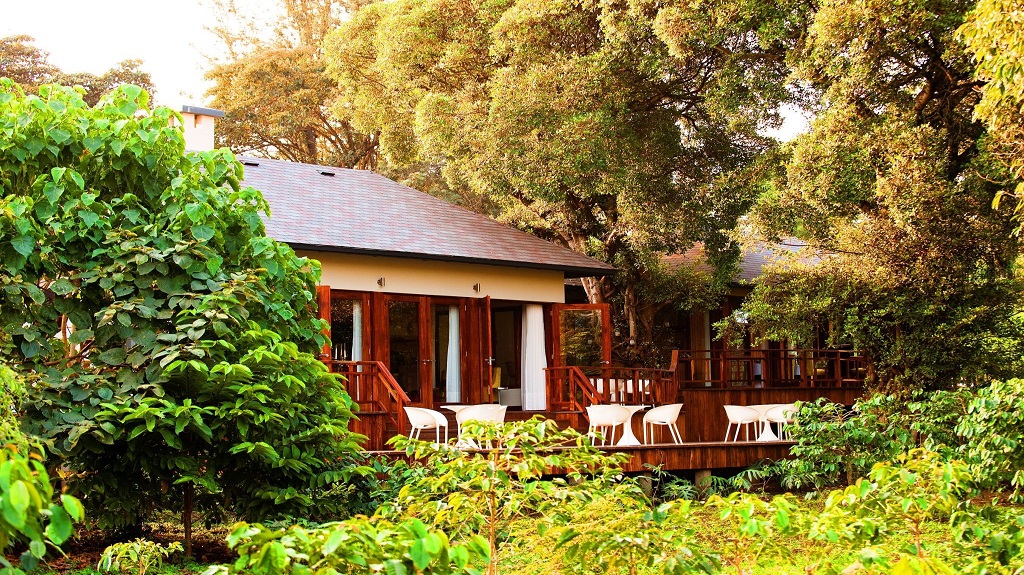
Day 1: Arrive Arusha, Tanzania
Upon arrival at Kilimanjaro International Airport, you will be met by our representative and transferred to the Lake Duluti Lodge (ten minutes from Arusha town). Lake Duluti, formed dramatically inside a volcanic crater, lies placidly in the protective shadow of Mount Meru. Thick forest curls its way around the lake, alive with the hundreds of different reptile and bird species.
Lake Duluti Lodge sits on the lake’s shores with eighteen chic, African-styled chalets across the thirty-acre coffee farm it encompasses. All chalets have private decks facing the farm, so you feel at home in this cozy corner of northern Tanzania. Though it’s secluded, it’s still a convenient 10-minute drive from Arusha’s busy center. Canoeing trips on the lake, hiking in the Duluti Forest, bird watching, and coffee tours can all be arranged here. If you prefer to relax and catch your breath before the big adventure, there are plenty of lounging areas looking out over the lake and the mountain.
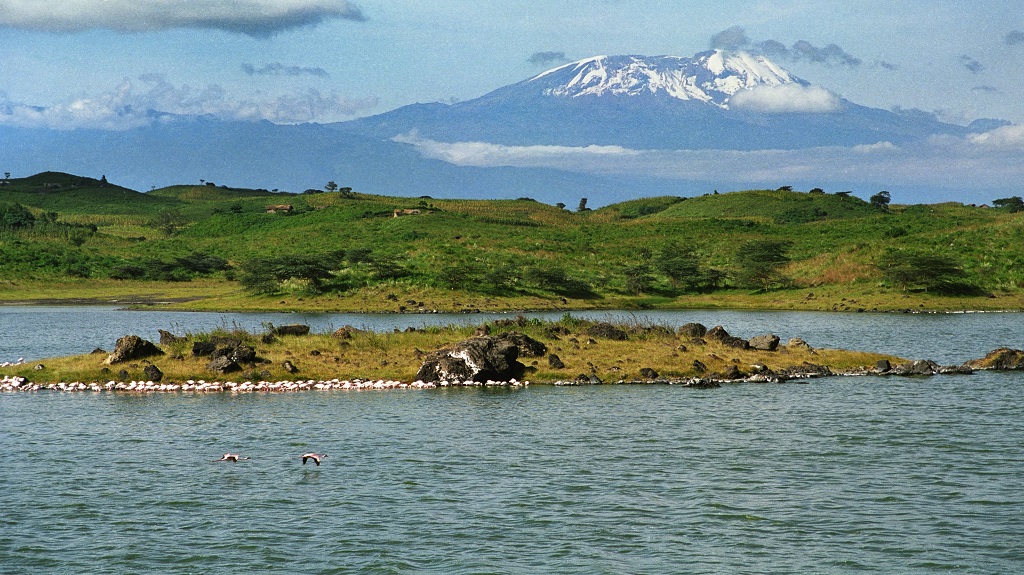
Day 2: Arusha National Park
Today will be spent walking in Arusha National Park, guarded by an armed ranger, and equipped with picnic lunches. This is the perfect way to acclimatize yourself to the area before heading up the mountain. Arusha National Park comes as an abruptly beautiful surprise; it rises suddenly out of the urban bustle before sprawling into one of Tanzania’s most topographically-varied national parks, which squeezes a montage of spectacular features into just 213 sq. miles, including the Momella Crater lakes; Ngurdoto Crater (nicknamed by some as Little Ngorogoro); and, of course, Mount Meru, towering 14,977 feet above to face Kilimanjaro across the valley. Amongst the park’s forests live a fascinating diversity of creatures, from bushbucks and duikers to chattering colobus monkeys. Down by the lakes, an entirely different display of wildlife is on show, with many of the 400 species of birds as well as waterbuck and reedbuck.
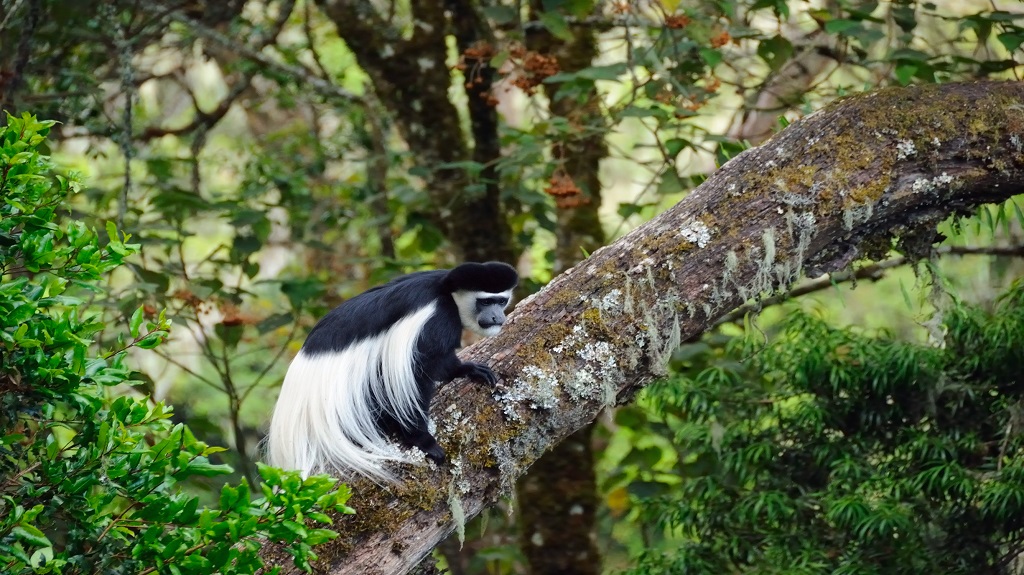
Day 3: Lake Duluti Lodge to Machame Camp
Following breakfast, you will be driven to Machame village on the lower slopes of Kilimanjaro, where you will begin the climb. Today will be spent trekking through giant fig and rubber tree forests, where you may catch glimpses of Colobus and blue monkeys as they chatter and swing through the branches above you. The dense forest is alive with other creatures and many of Kilimanjaro’s unique plants. As you emerge from the forest and begin to see over treetops to extensive plains below, you will reach Machame Camp.
Hiking Time: 6 hours
Machame Camp (elevation 9,350 feet)
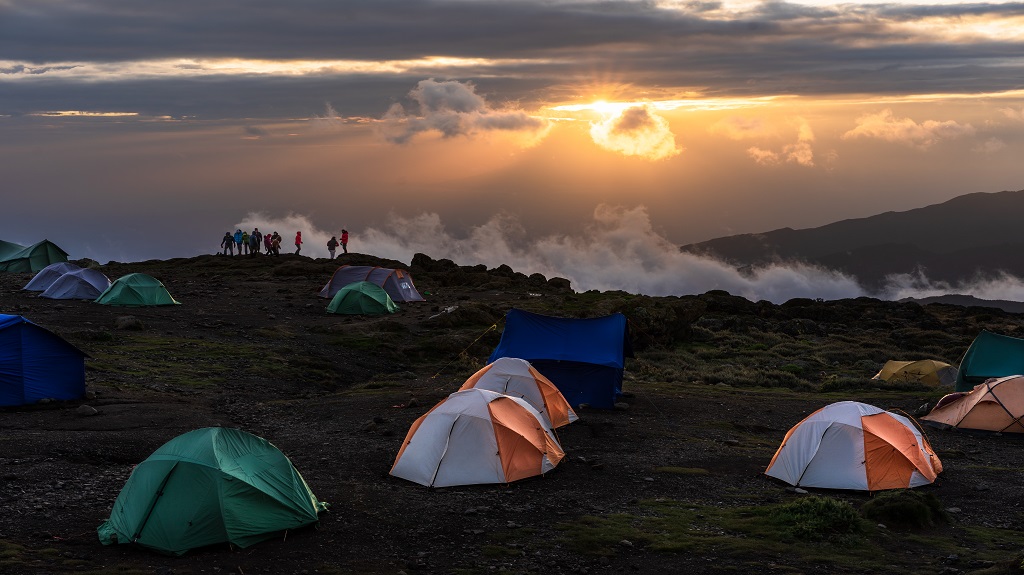
Day 4: Machame Camp to Shira Camp
You will begin your day at 6:00 a.m. with a hot drink and, weather permitting, a stunning view of Uhuru Peak. Today you will trek out of the forest and up into heath and moorland, where the abrupt change in landscape is a clear demonstration of Kilimanjaro’s famed “four seasons in four days”. This Hagenia Zone is savannah carpeted with tall grasses, bearded heather, and rugged terrain of volcanic lava, caves, and foamy streams and flanked by the mountain’s famous giant groundsels. The day’s destination is the rocky Shira Plateau, where you will spend the night at Shira Camp.
Hiking Time: 6 hours
Shira Camp (elevation 12,500 feet)
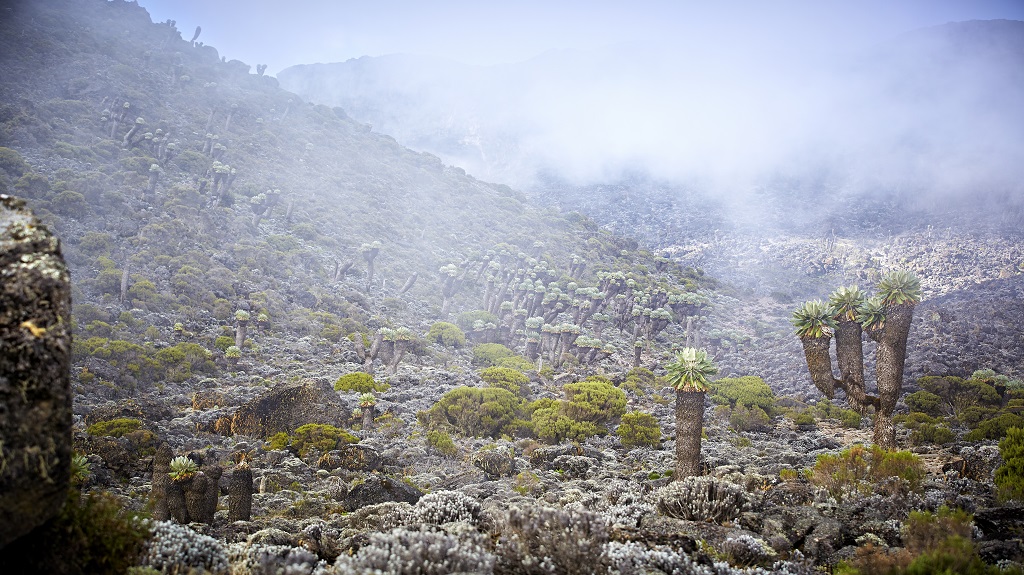
Day 5: Shira Camp to Barranco Camp
This morning, as you cross the Shira Plateau, a spectacular view of Kibo Peak rears ahead. Eventually, you’ll meet the Lava Tower, a freestanding rock that rises 325 feet into the sky and begin your descent through the immense Grand Barranco Canyon. Winding through the gorge, you will encounter more enormous groundsels, their strange fingered-trunks stretching far taller than the climbers, as well as several small waterfalls fed by mountain streams. You will camp overnight at Barranco Camp, the most picturesque camp on the route, tucked beneath the snow-capped Great Barranco Wall and enveloped by lush landscape.
Hiking time: 6 hours
Barranco Camp (elevation 13,044 feet)
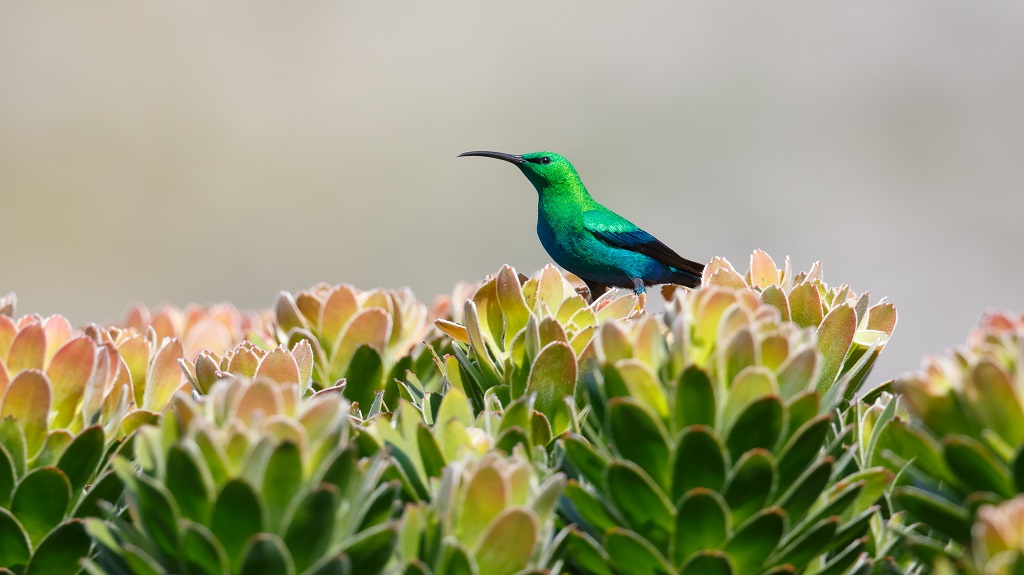
Day 6: Barranco Camp to Karanga Camp
Today is intended to be a short, acclimatization day. At the beginning of the day’s trek, you will be confronted with ascending the Great Barranco Wall, after which the path winds down into pretty Karanga Valley, where malachite sunbirds can be seen amongst the flowers. You will spend the night at Karanga Camp, which has no increase in elevation to allow for plenty of acclimatization time.
Hiking time: 4 hours
Karanga Camp (elevation 13,106 feet)
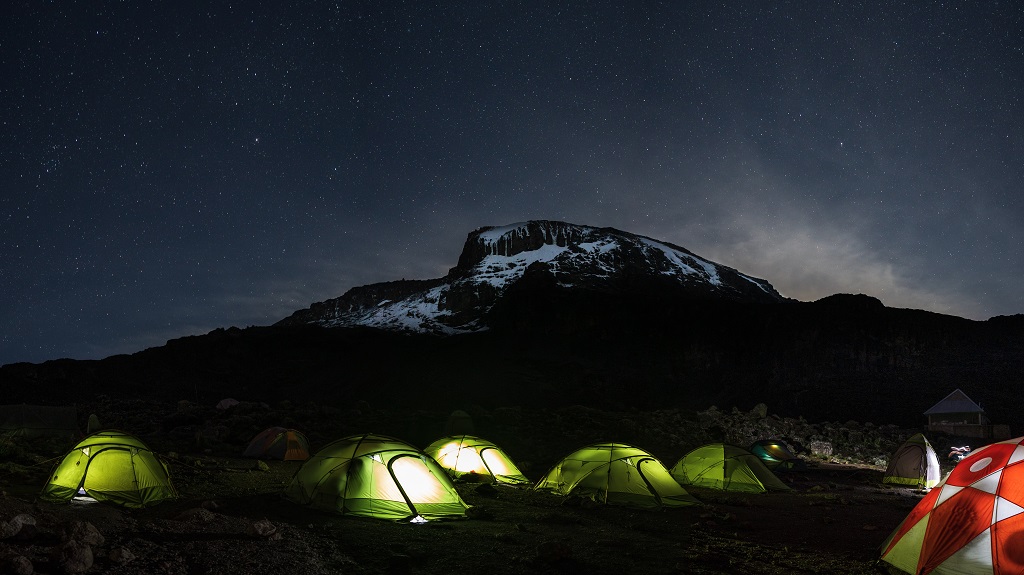
Day 7: Karanga Camp to Barafu Camp
Today will be another short day, spent trekking through the strangely-beautiful lunar desert, with views of both Mawenzi and Kibo peaks towering ahead — intimidating, yet encouraging! You will camp overnight at Barafu Camp, also known as Base Camp, and spend the afternoon resting and preparing for the much-anticipated summit day.
Hiking time: 4 – 5 hours
Barafu Camp (elevation 15,331 feet)
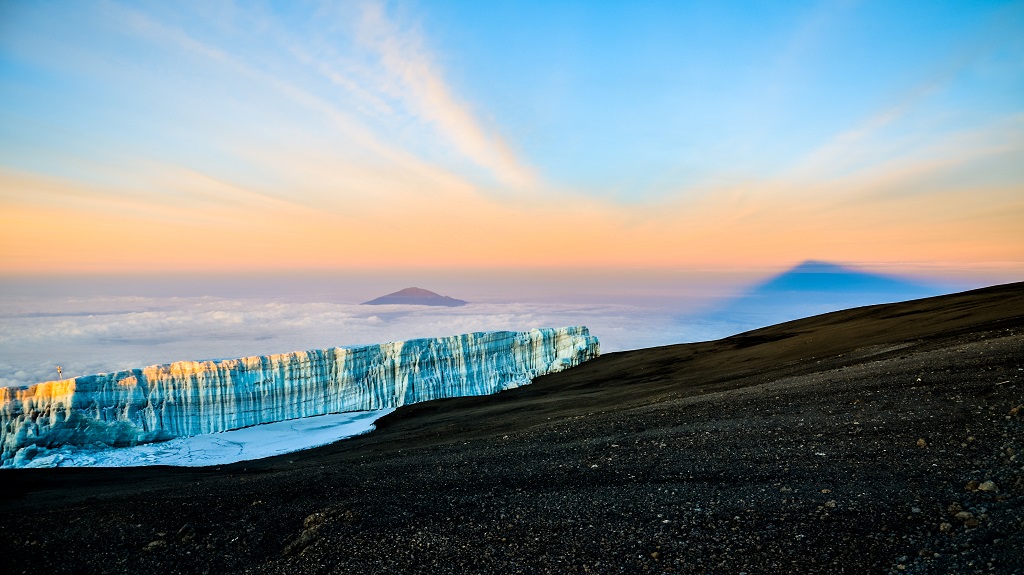
Day 8: Barafu Camp to Uhuru Peak to Mweka Camp
On summit day, you will be woken up around midnight to start one of the most physically challenging treks of your life. Your group will ascend the path, flanked by the Ratzel and Rehman glaciers, step by step, ensuring that everyone goes at a safe, slow pace, “pole, pole” meaning “slowly, slowly”, the guides will softly urge in Kiswahili, on careful watch for signs of altitude sickness.
After about six hours you will reach Gilman’s Point, which lies on the rim of Kilimanjaro’s crater. From here, you may watch as the sun rises above snow and clouds — a truly extraordinary sight! From Gilman’s Point, it takes another two hours (and a lot of willpower) to push through to Uhuru Peak. “Uhuru” means “freedom” in Kiswahili, named thus when Tanzania gained its independence in 1961. From here, you may finally admire Africa from her highest vantage point and revel in the enormous challenge you have just conquered.
After taking photos and soaking up as much of this spellbinding view as you can, the descent begins. You will stop at Barafu Camp for breakfast before continuing to Mweka Camp in the upper forest, where you will spend your final night on “the Roof of Africa”.
Hiking time: Approximately 13 hours
Mweka Camp (elevation 10,065 feet)

Day 9: Mweka Camp to Lake Duluti Lodge + Departure
On your last day, you will hike mainly through forest, trekking downhill — a pleasant change after summit day! At Mweka Gate, you will pick up your well-deserved certificate before being driven back to Lake Duluti Lodge. Here, you will relax in your day-use room and enjoy a hot shower and lunch.
In the evening, you will be driven to Kilimanjaro International Airport for your onward flight home or to continue your adventure with a luxury Tanzania safari!